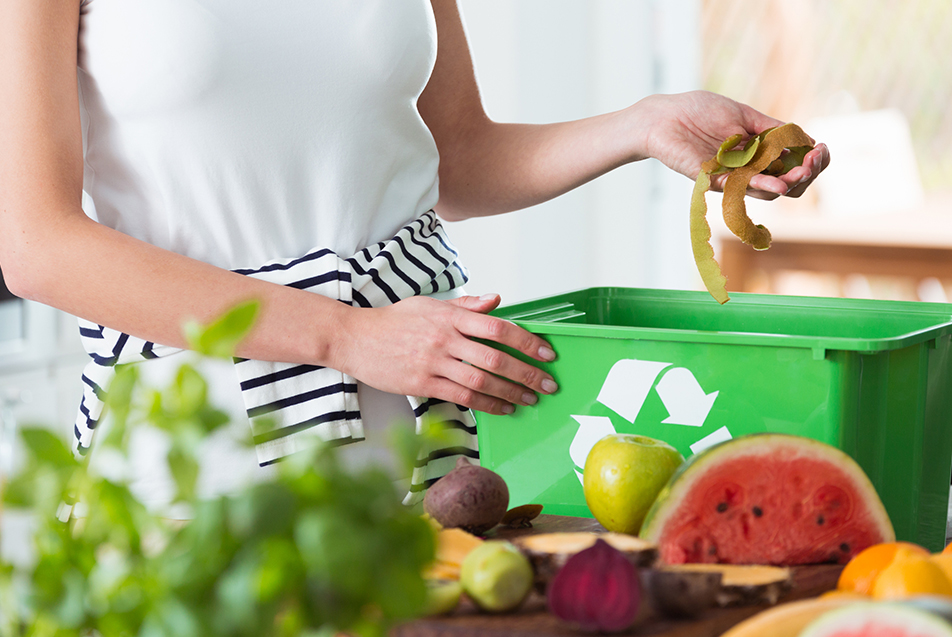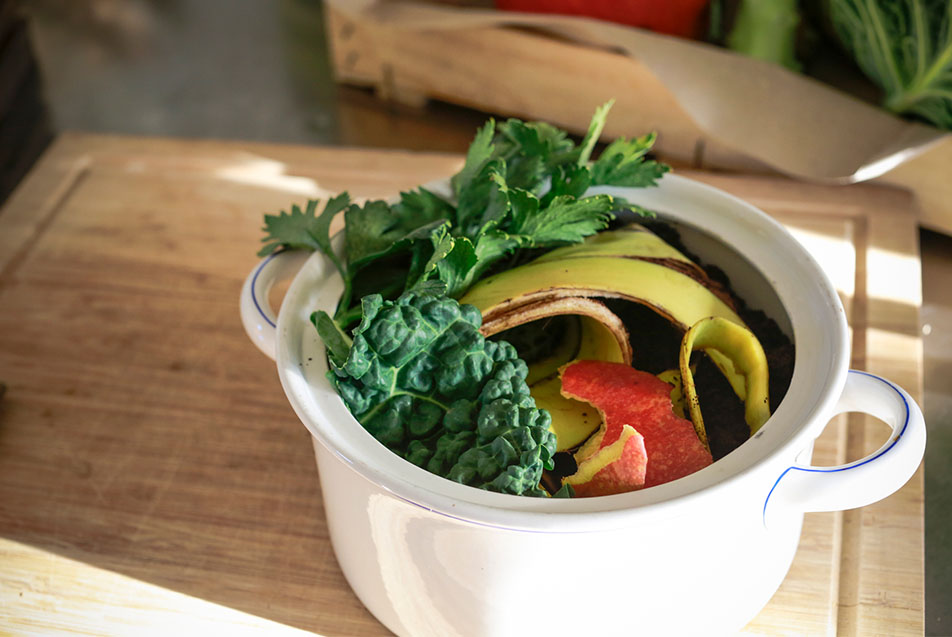
As a country, we aren’t doing so hot with our food waste. According to a Guardian report, roughly 50 percent of all produce in the U.S. is thrown away—nearly 60 million tons (or $160 billion) worth of produce annually. While meal planning and smart shopping help quite a bit, there’s another option that’s rising in popularity. Composting is a great way to put the things you don’t put in your body, back into the earth, a practice Kathy Wehrle, RDN, community outreach, fully endorses. Here she shares a bit about her experience with vermicomposting, which is composting with the assistance of a few thousand worms.
“I just started doing worm composting at my house,” Kathy said. “I have a cute little compost bucket that my son (a plant science guy) bought for me for my birthday. It is underneath my sink and the lid on the bucket has a carbon filter, so it never smells. Plus, you dump your food scraps every few days. He set me up with a large plastic bin (with air holes on top) filled with ‘browns’ – old leaves, small twigs, newspaper, small pieces of cardboard, etc. I added in my food scraps – the ‘greens’. You want a ratio of 2 browns to 1 green. The secret weapon was that he bought me two containers of California red wigglers (worms). Evidently they consume waste most quickly. While I was a little grossed out at first, I knew I really wanted to do this. So, I sucked it up and now have bonded with those little critters! We added a little water and voila! I am a vermicomposter! We are making compost in a super-fast manner (just a few weeks). I add scraps, trowel things around and it seems to be working really well!”
Here’s what Kathy wants you to know …
Why compost?
“To grow nutrient dense vegetables and fruits! When you add compost to richen the soil of your vegetable garden, you will grow very nutrient dense fruits and veggies. Store-bought produce may have somewhat lower nutrient density than that of freshly grown produce grown in nutrient rich soil. That nutrient dense produce makes your health soar! Fruits and veggies are loaded with antioxidants that have a wide array of disease-fighting properties.
The nutrients from food scraps encourage the production of beneficial bacteria and fungi that break down organic matter to create humus which is full of nutrients for plants to grow (though this is a different nutrient profile from the fruits and vegetables it helps to produce).”
Any other reason we should compost?
“For the planet! Food scraps and yard waste currently make up 20 - 30 percent of materials in landfills, where they take up space and release methane, a potent greenhouse gas.”

Convinced? Here’s how you can get started*:
1. Set up your space. If you have room in your yard, you can fence off an area (3 x 3 x 3 feet is considered ideal) and start your scrap pile directly on the ground. For a tidier arrangement, buy or make bins to contain your organic waste or drums that tumble and aerate it, which helps to convert it to compost even faster. Even apartment dwellers can get in on the action: Indoor bins stocked with red worms, process food scraps in a smaller space.
2. Master the mix. Add two or three parts carbon-heavy “browns” for every one part nitrogen-centric “greens.“ The “browns” include shredded newspaper and other paper, dead leaves, and food-soiled paper napkins. (Just don’t use any coated, shiny paper, including milk cartons—they won’t break down sufficiently.) For “greens“. toss in fruit and vegetable bits (scrape off any plastic stickers first), breads and grains, coffee grounds and filters, and grass clippings. To stash your scraps until you’re ready to haul them out to the yard, you may find it convenient to designate a pail under the sink or a bag in the freezer.
3. Be selective with your scraps. There are a few food scraps that should still go out with the trash. Meat, bones and dairy products don’t belong in the typical household compost pile. When adding food scraps like bread products to your pile, it’s best to add in moderation and bury them in your heap to help reduce unwanted attention from pests.
4. Let the rot set in. In the summer, use a shovel or old garden fork to turn the pile once a week; in the winter, once every three or four weeks. After each layer, sprinkle on soil from the garden to add beneficial organisms, plus a little water to wash the organisms into the pile, if you desire. To tell whether your pile needs water, grab a handful; it should feel about as damp as a wrung-out sponge.
5. Use your pay dirt wisely. Over a few weeks, those food scraps and shredded leaves will morph into soil-like dark matter. The compost is complete when it has a musty, earthy smell and you can’t recognize any of the items you dropped in. If you have a garden, sprinkle the compost around plants, mix it in with potting soil, or use it as a top dressing for your lawn.
Items you can compost:
Cardboard (uncoated, small pieces), coffee grounds and filters, egg shells, fireplace ashes (from natural wood), fruits and vegetables, grass clippings, hair and fur, hay and straw, houseplants, leaves, newspaper (shredded), nutshells, paper (uncoated, small pieces), sawdust, teabags, wood chips
Items you can’t compost:
Black walnut tree leaves or twigs, coal or charcoal ash, dairy products and eggs, diseased or insect-ridden plants, fats, grease, lard, oils, meat or fish bones and scraps, pet feces or litter, yard trimmings treated with chemical pesticides



